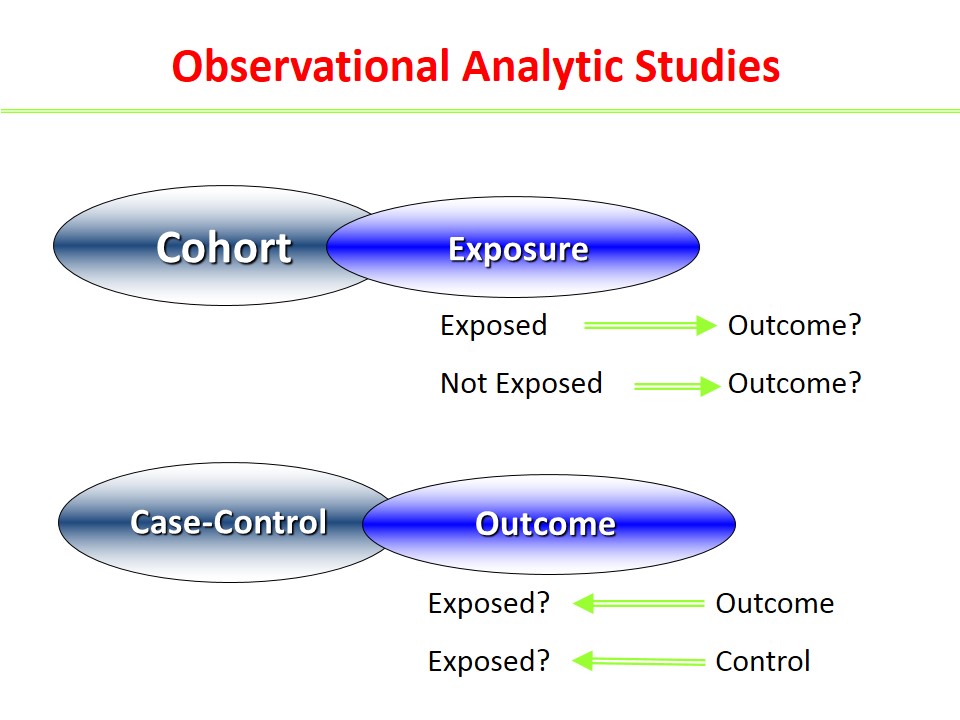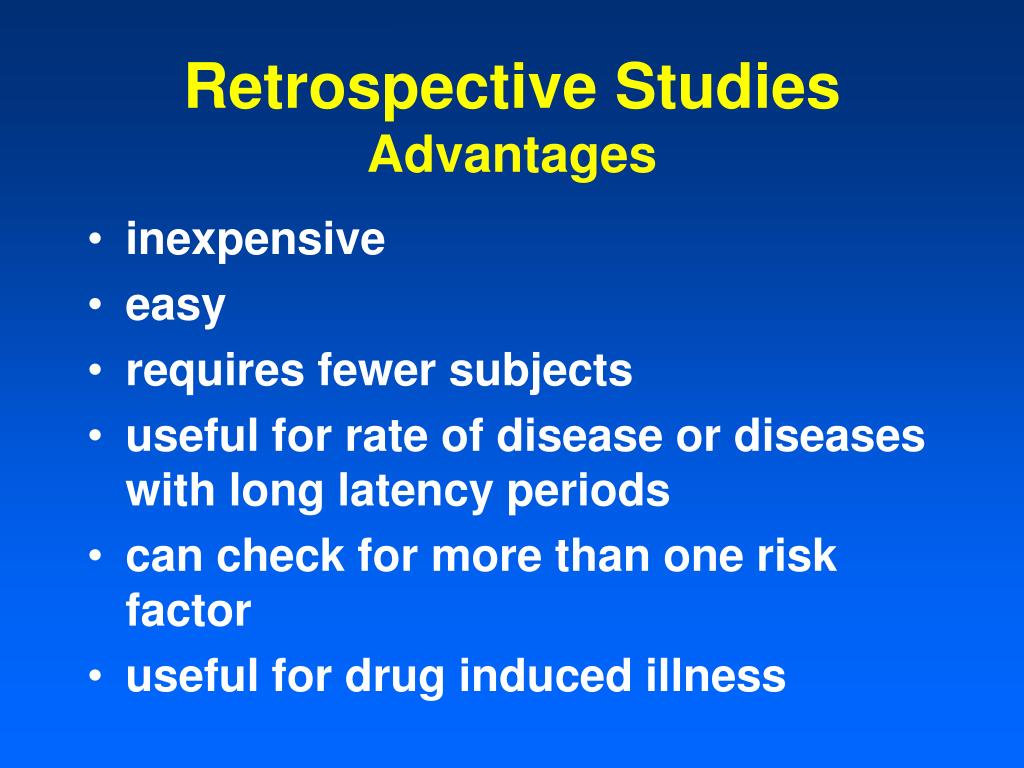

The data to be used in calculating the relative risk can be summarized in a 2x2 table below. It is describe as the ratio of the outcome among exposed individual to the incidence among unexposed individual. Relative risk compares the probability of an outcome among individuals who have specific characteristics. Retrospective cohorts where available are cheaper and quicker but in analyzing cohort studies, Confounding variables are the major problem, Subject selection and loss to follow up is a major potential cause of bias. It also measure events in temporal sequence thus distinguishing causes from effects. The key point here is that the cohort studies describe incidence or natural history, they analyses predictors (risk factors) thus enables in calculation of relative risk.


The Nurses’ Health Study-2 commenced in in the year 1989 with 117,000 nurses aged from 25 to 42 and recruitment has recently started for a Nurses’ Health Study-3. It was very expensive to carry out, but the scientific and public health bear has been excellent. It has almost build up more than 30 years of follow-up and is still moving strong. Since then its focus has broadened extremely from the oral contraceptive-breast cancer links in which it was first backed cited in 3 to shell many exposures including the diet and a mass of outcomes. 3 Some notable cohort studies include the US Nurses’ Health Study which started in the year 1976 with 121,964 female nurses aged from 30-55, and 5 years of backing. The principle phase of cohort study is to identify healthy persons at starting point firstly Convene the subjects in to exposed and unexposed groups, and then Follow-up of the cohort to estimate the incidence rate of the disease being studied the in two groups and compare the occurrence of the disease or risk in each cohort. 4 The improvement of the studies by which the significant information about the members of the cohort are right away obtained from the members by the researchers, who then follow them up forward to determine the frequency of the outcomes in which they are attentive in, that is often called the prospective cohort studies. In the case of current cohort study, the information concerning the exposure are accumulated prior to the incidence of disease, hence the current cohort study is called the perspective cohort study. 4 In late years by some authors, historical cohort studies are referred to as retrospective cohort studies because information concerning the cohort studies is collected retrospectively. Historical cohort study is known as the retrospective cohort study, in this study, data on concerning the subjects or the occurrence of the disease are collected to the rear of the events that have taken place the cohorts of exposed and unexposed subjects from existing records, or health care registries. Current and historical cohort studyĬoncerning the time when cohort study was introduced relative to the occurrence of the disease to be studied, the difference between the current and historical cohort studies can be distinguish, Cohort studies can be either prospective or retrospective. A relative risk of less than “1” provides the evidence for a defensive outcome of the exposure (the incidence rate of disease among exposed is lower than that of unexposed group) while a relative risk greater than “1” indicates that exposed people are at higher risk of disease than unexposed group. A relative risk of “1” indicates that the incidence rate is the same among the two groups, which are the exposed and unexposed subjects and point out a lack of correlation between exposure and diseases. 5 Relative risk is the ratio of the incidence rate of the key subjects to that of the control subjects. 5 The comparative frequency measures include the risk ratio or relative risk and odd ratio or relative odd. The comparative risk statement defines the risk of developing a disease among individuals exposed to a suspected risk factor compared to those without exposure. The measure of association makes the most of comparative risk statement to study why a specific event occurs. The incidence rates for both exposed and unexposed subjects are calculated discretely. Rushton, 4 the numerator of the rate can be described as the number of diseased subjects while the denominator is usually the number of person-years of observation as shown below. In cohort study, measure of disease that describes the absolute risk is known as the incidence rate, which is the proportion of the subjects under the study who developed the disease within a specified period of time.


 0 kommentar(er)
0 kommentar(er)
